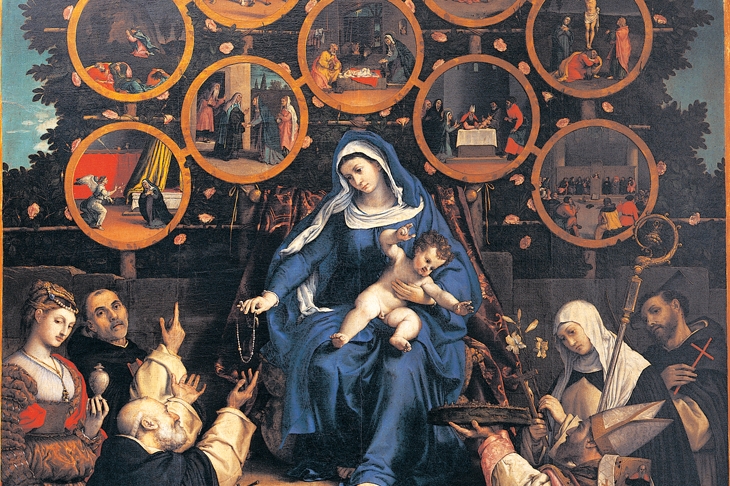Lorenzo Lotto’s portraits — nervous, intense and enigmatic — are among the most memorable to be painted in 16th-century Italy, but his fellow Venetians didn’t see it that way. In a letter to Lotto of 1548, the poet and satirist Pietro Aretino wrote that he was ‘outclassed in the profession of painting’ by Titian.
Now, though, with an exhibition of his portraits in store at the National Gallery next year, it looks as though Lotto’s time may finally have come.
On a bright day this autumn my wife and I went on the trail of this most fascinating and idiosyncratic of Renaissance artists. Our goal was Cingoli, in the foothills of the Apennines, which likes to refer to itself as the ‘balcony of the Marche’ because of the view over the plain and extending — allegedly, on a fine day — right across the Adriatic to Croatia. Better still, if you love art, the town is home to a great painting: Lotto’s ‘Madonna of the Rosary’ (1539).
The most extraordinary feature is not the Madonna and Child on their throne, but what towers above them: a huge rose bush, its blooms beautifully represented, grows around a wooden frame bearing 15 small round pictures within the larger picture. These represent the 15 Joyful, Sorrowful and Glorious Mysteries of the Rosary — that is, the events in the lives of Christ and Mary on which the devout meditate while saying the rosary.
Most prominent among the Joyful Mysteries is the Nativity, placed centrally just above Mary’s head. This is not the only reason why there is a vaguely, if unhistorically, Christmassy feeling to the whole ensemble. Not many works of art have as their largest motif an enormous, decorated tree. There are presents, too.







Comments
Join the debate for just £1 a month
Be part of the conversation with other Spectator readers by getting your first three months for £3.
UNLOCK ACCESS Just £1 a monthAlready a subscriber? Log in